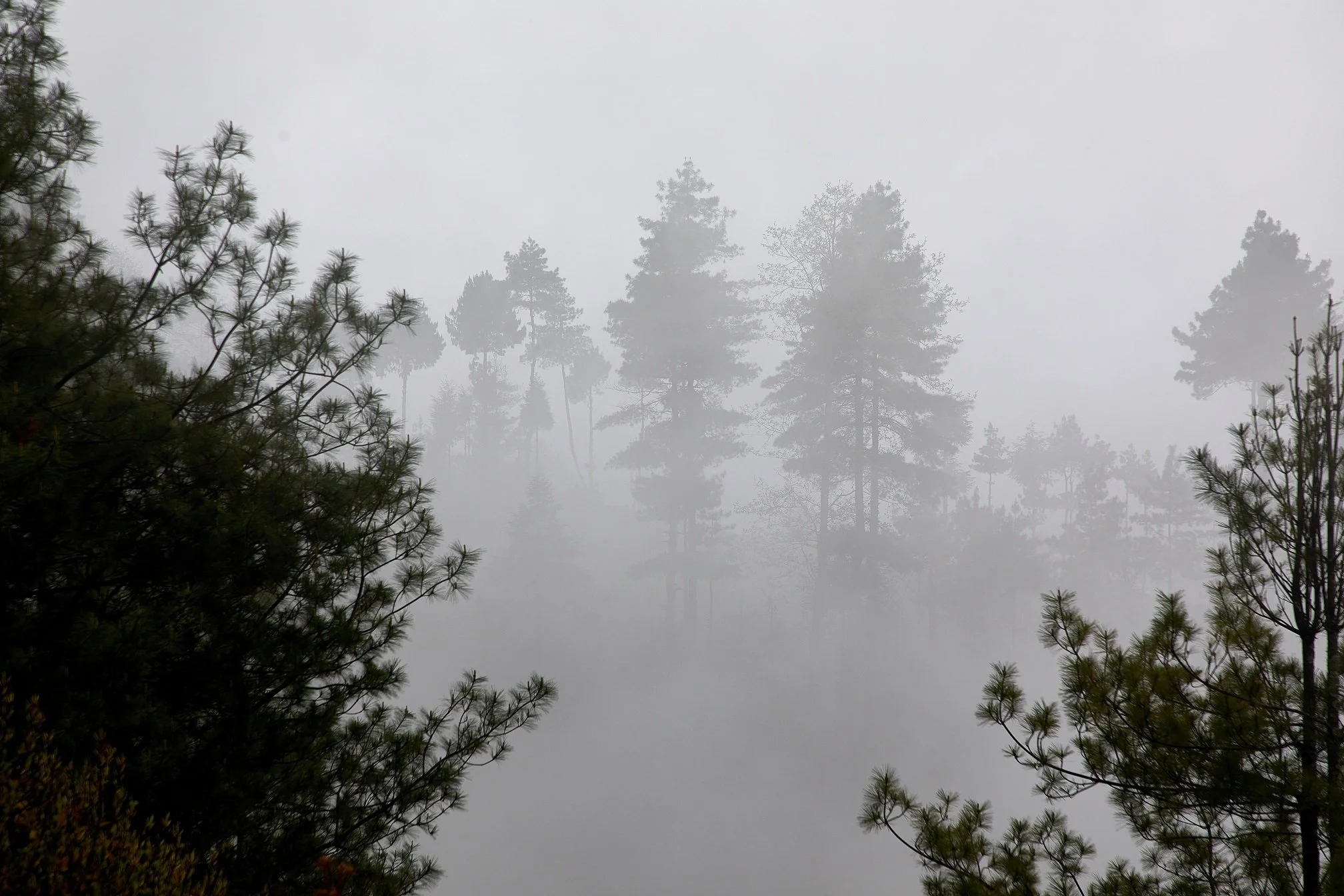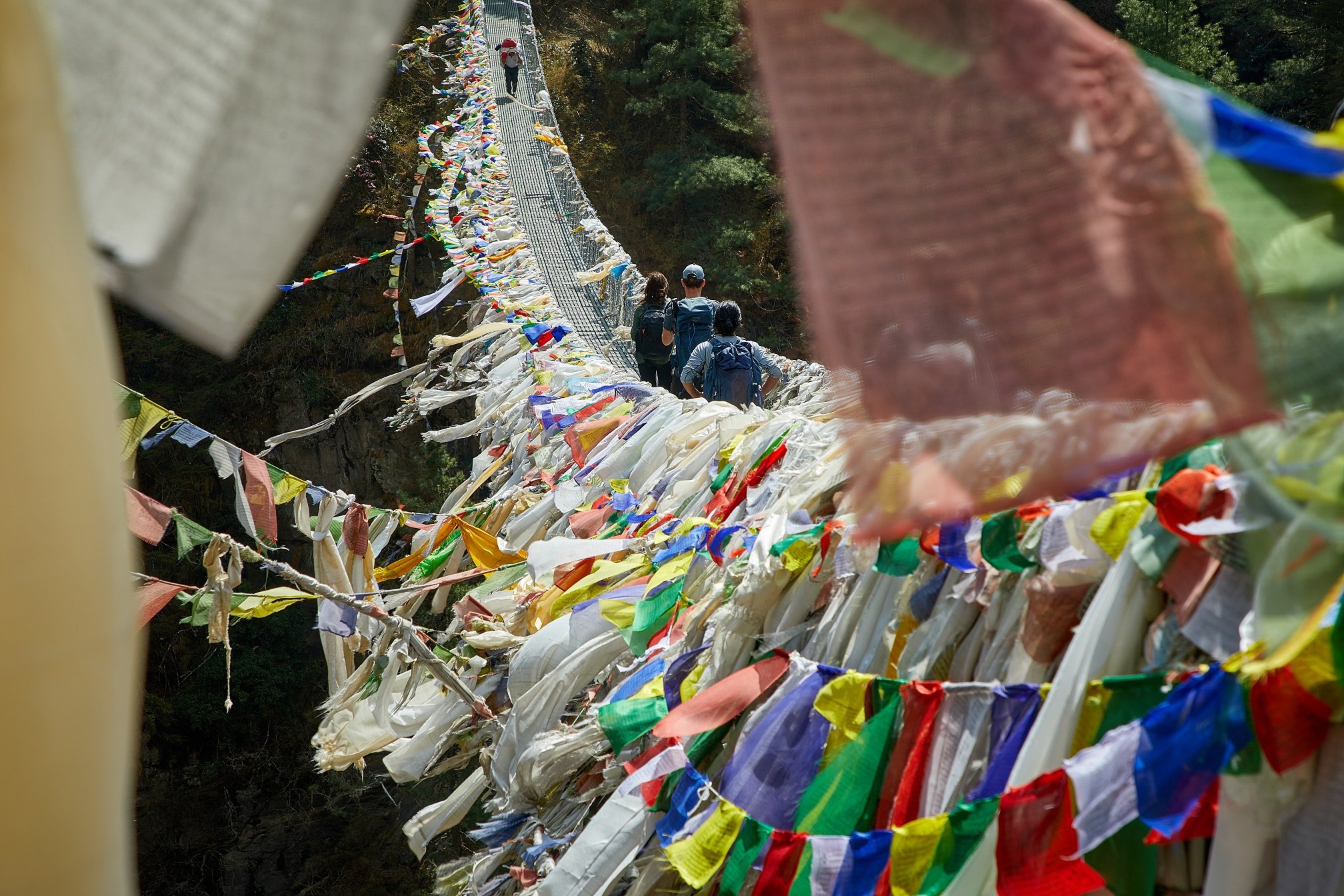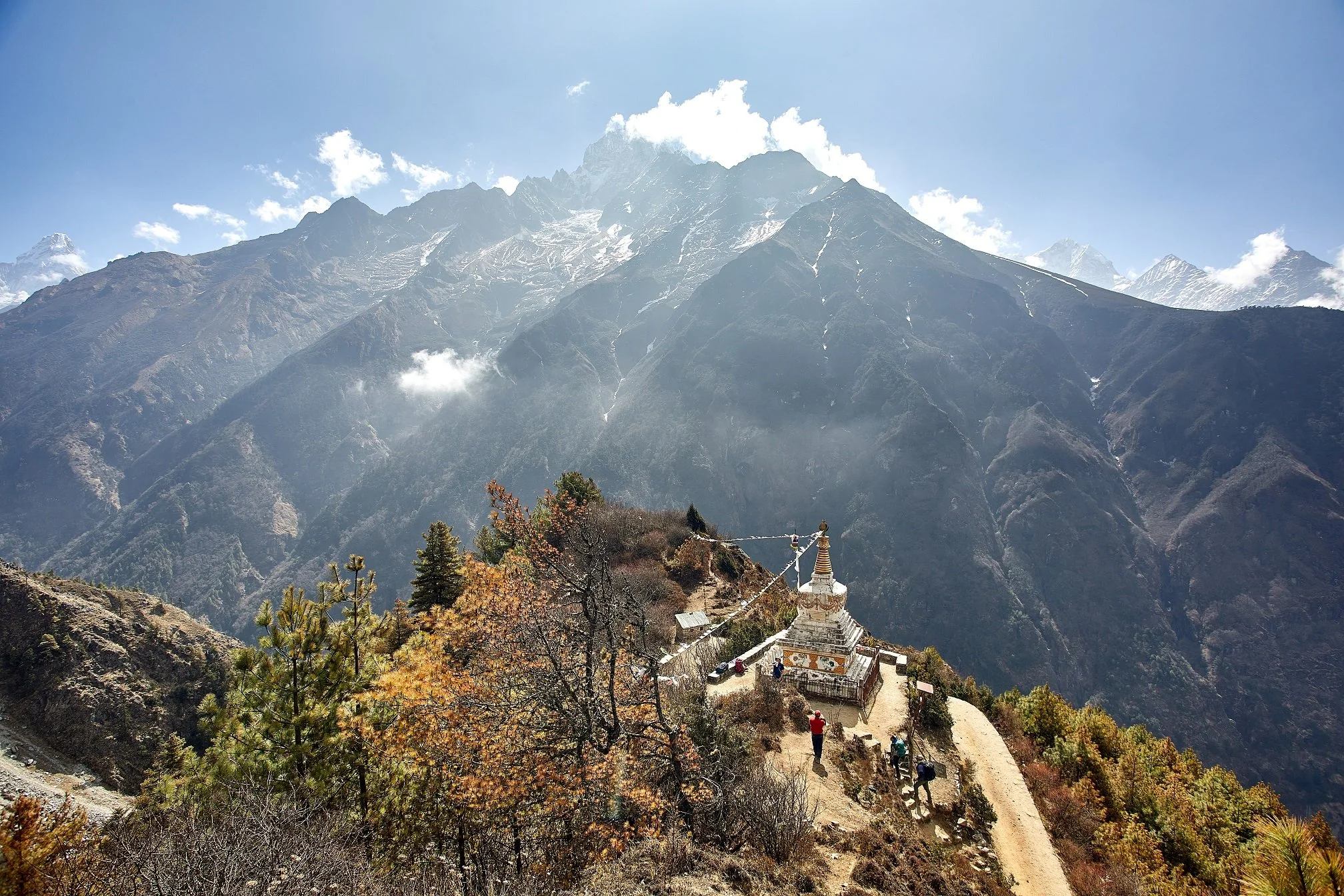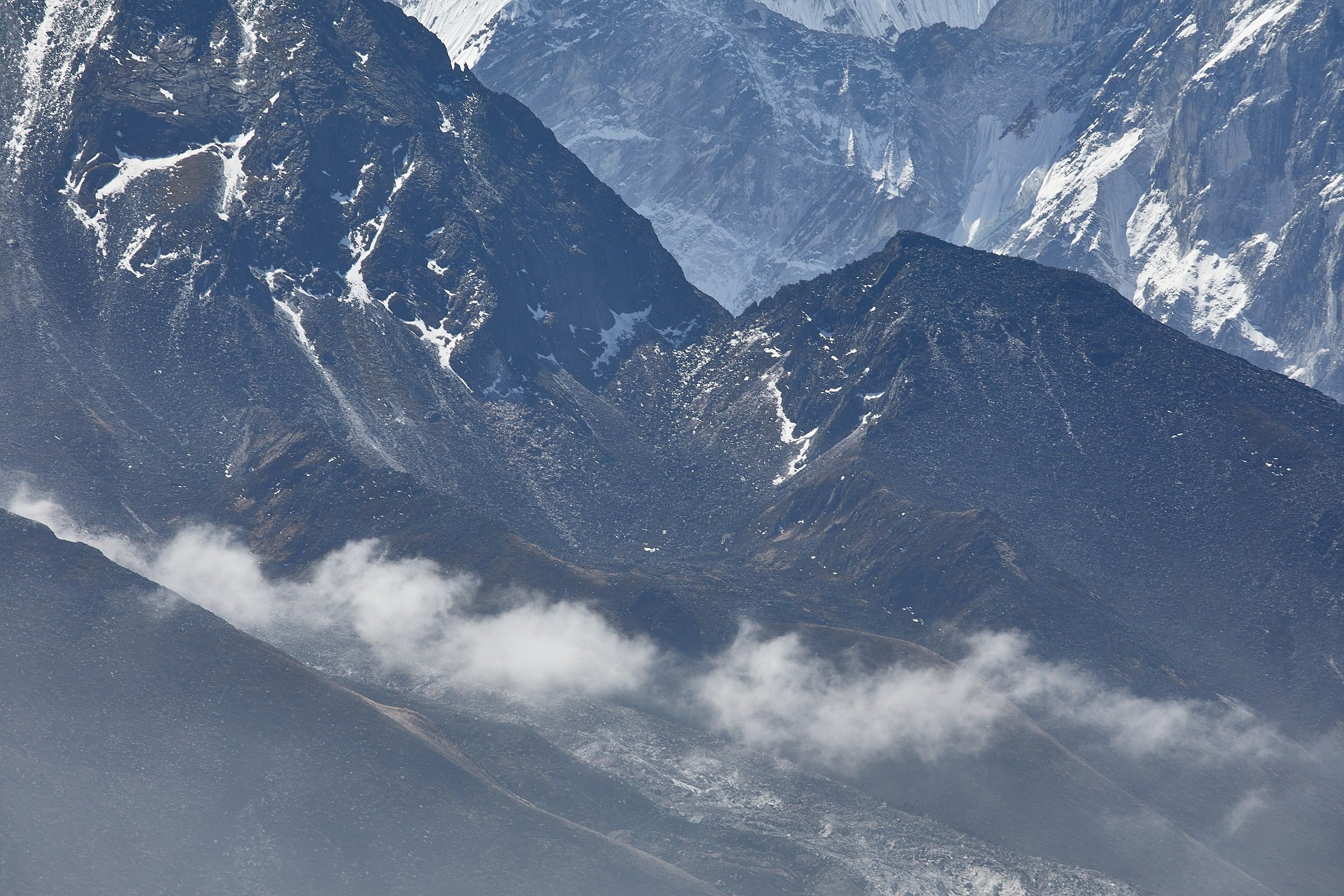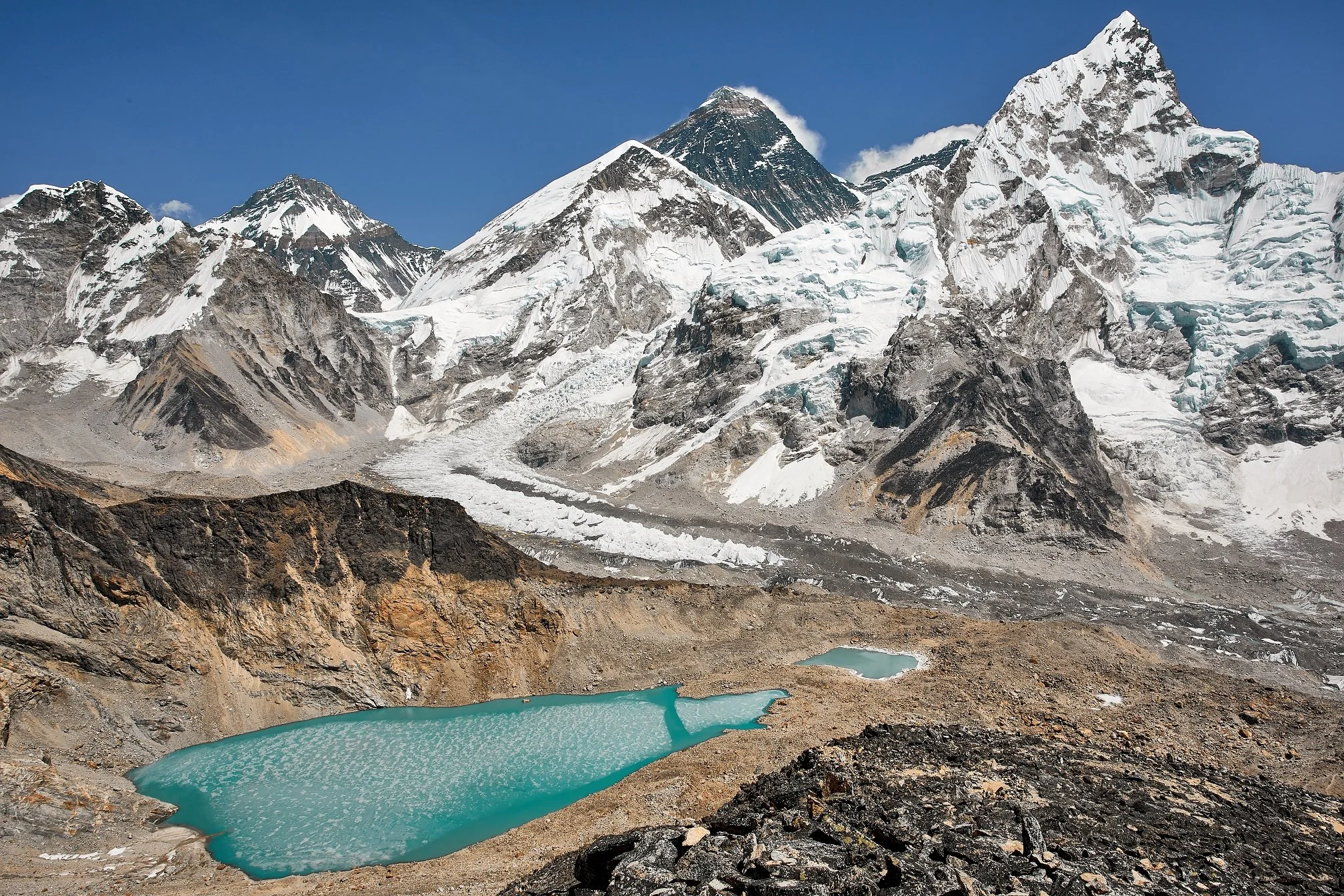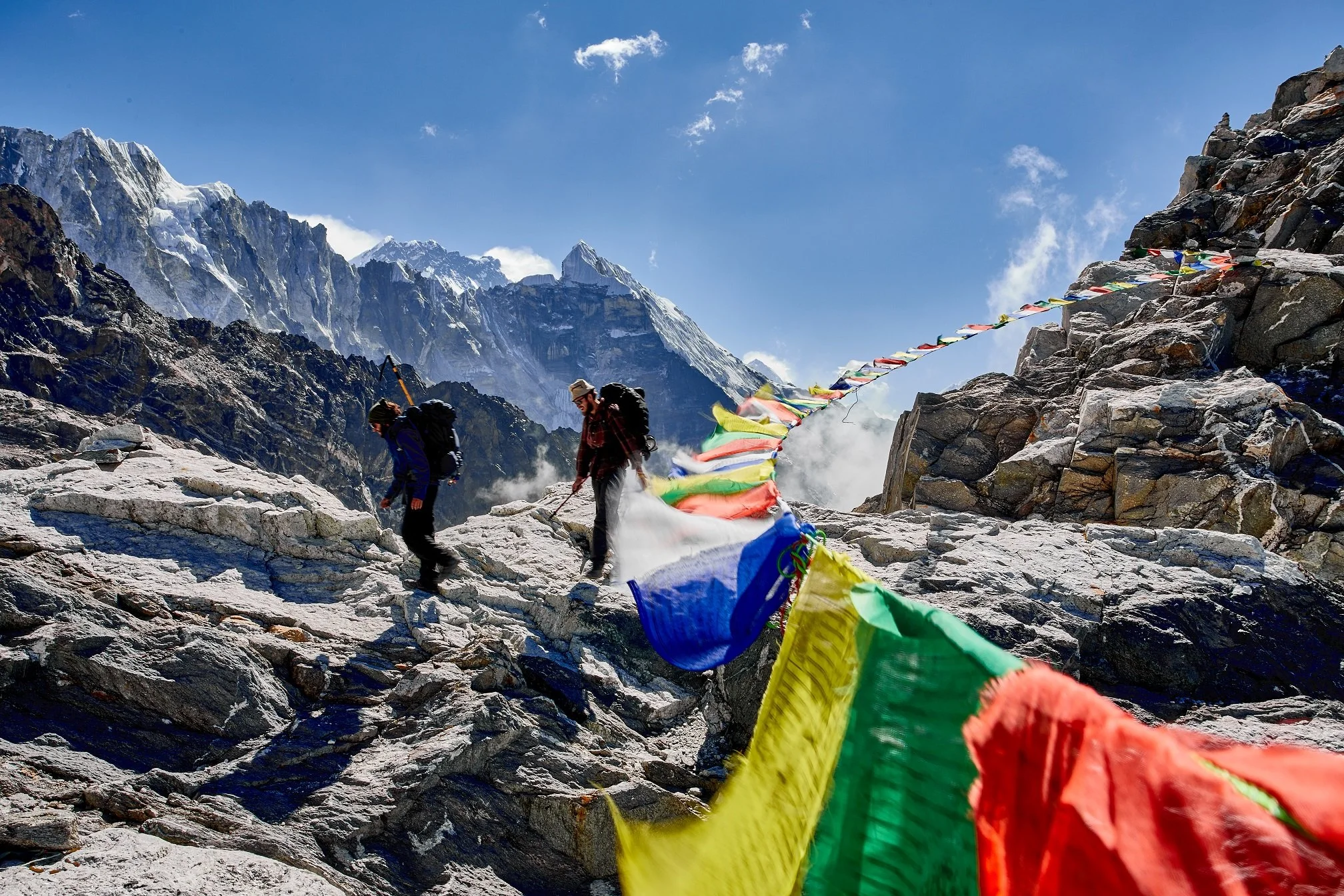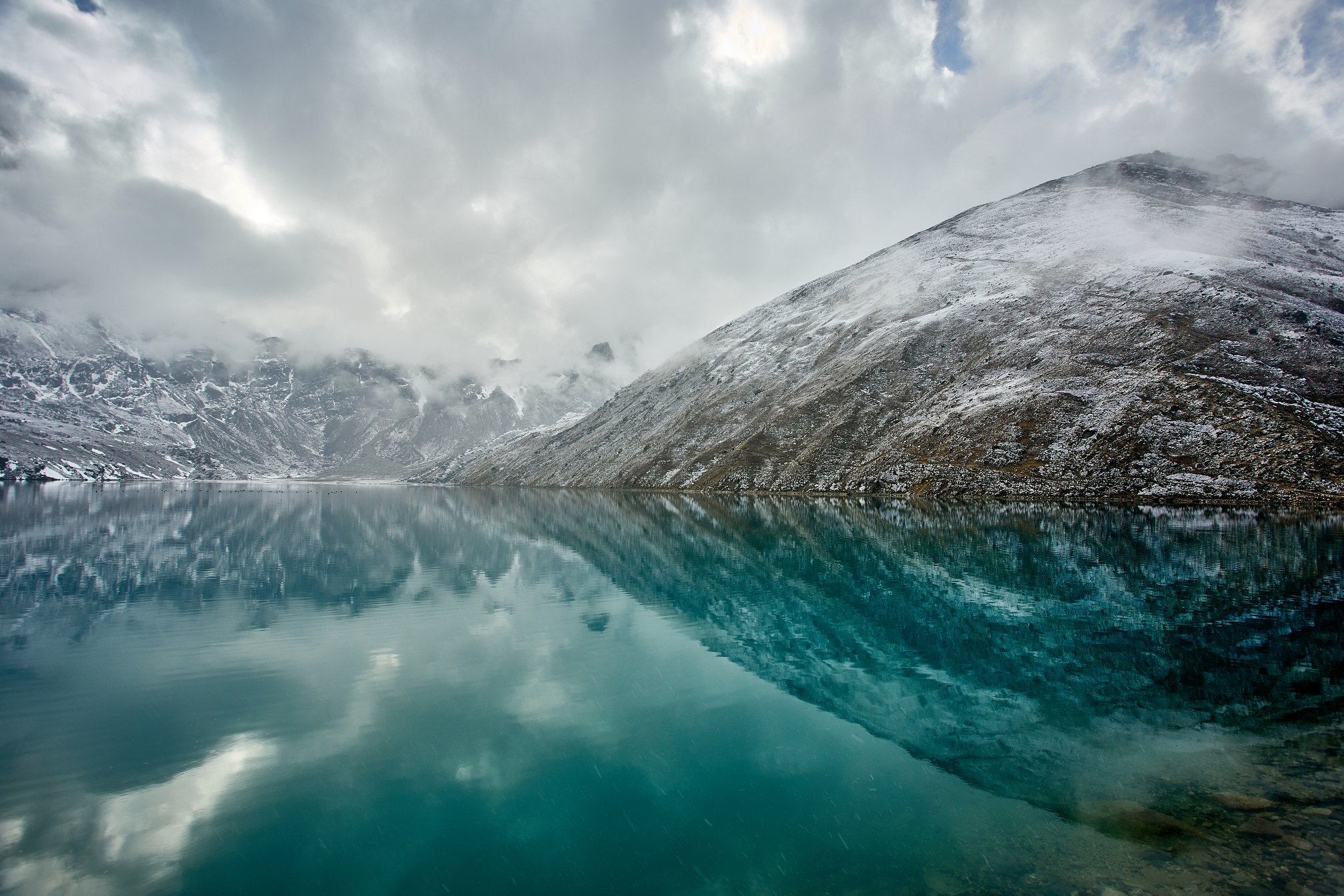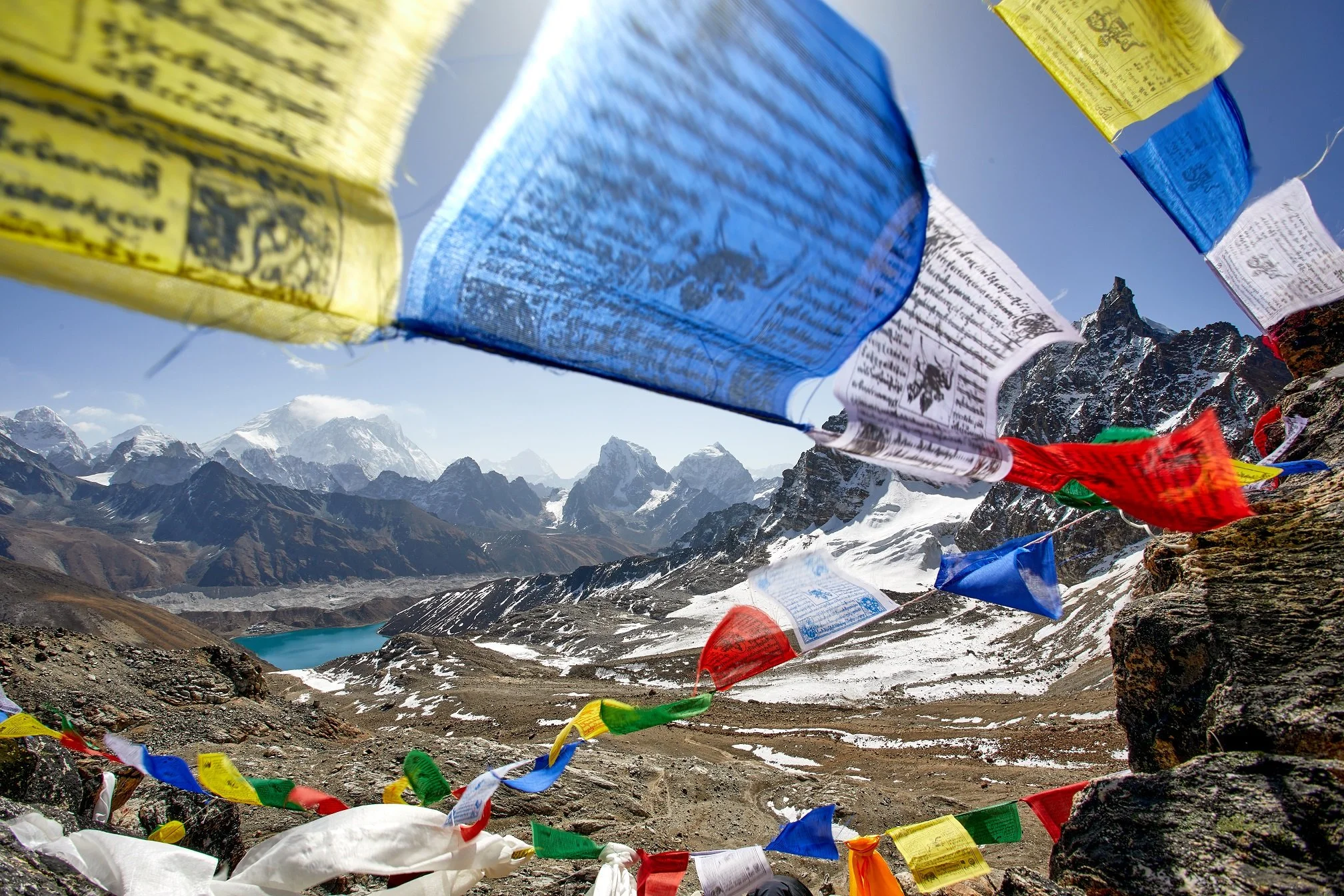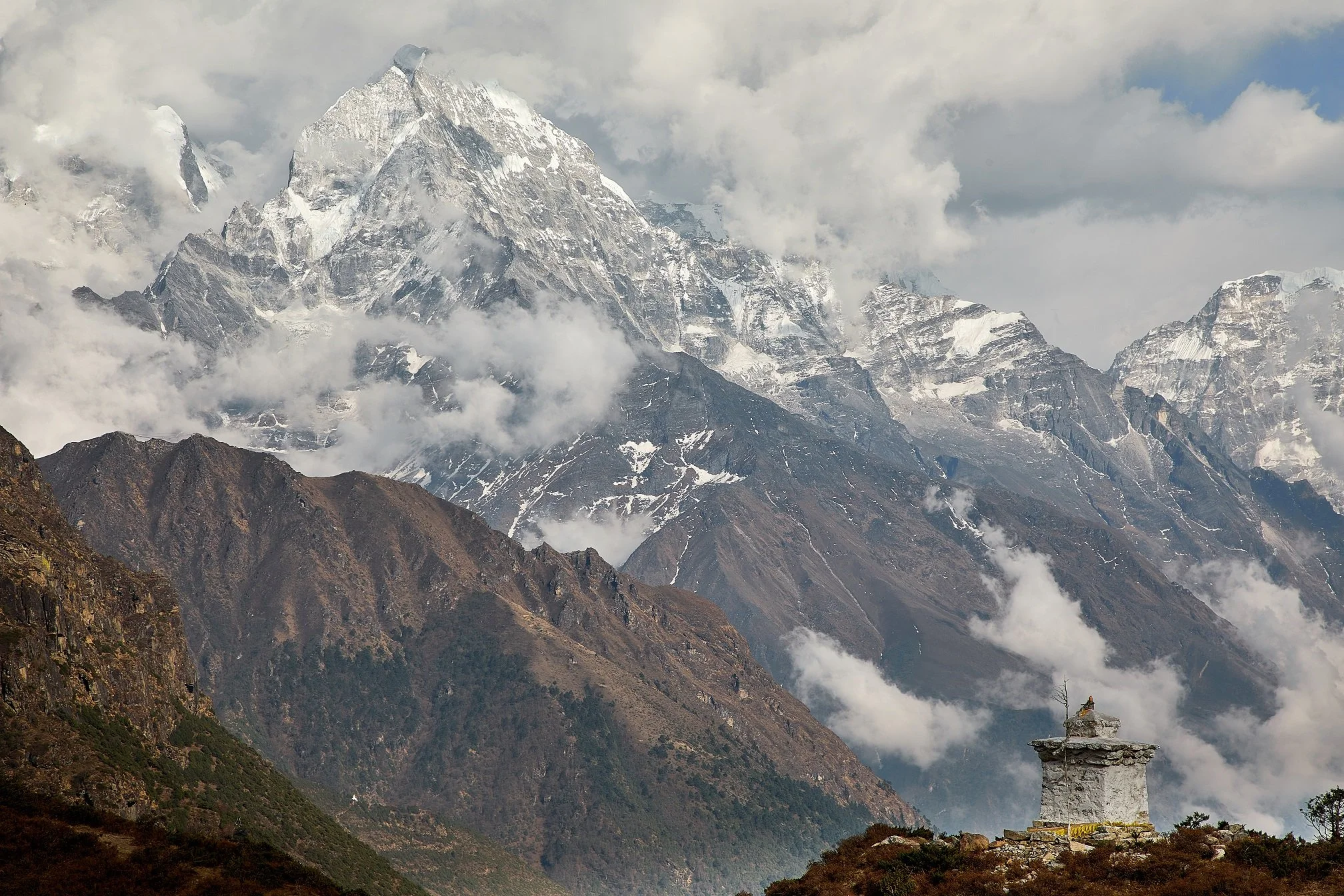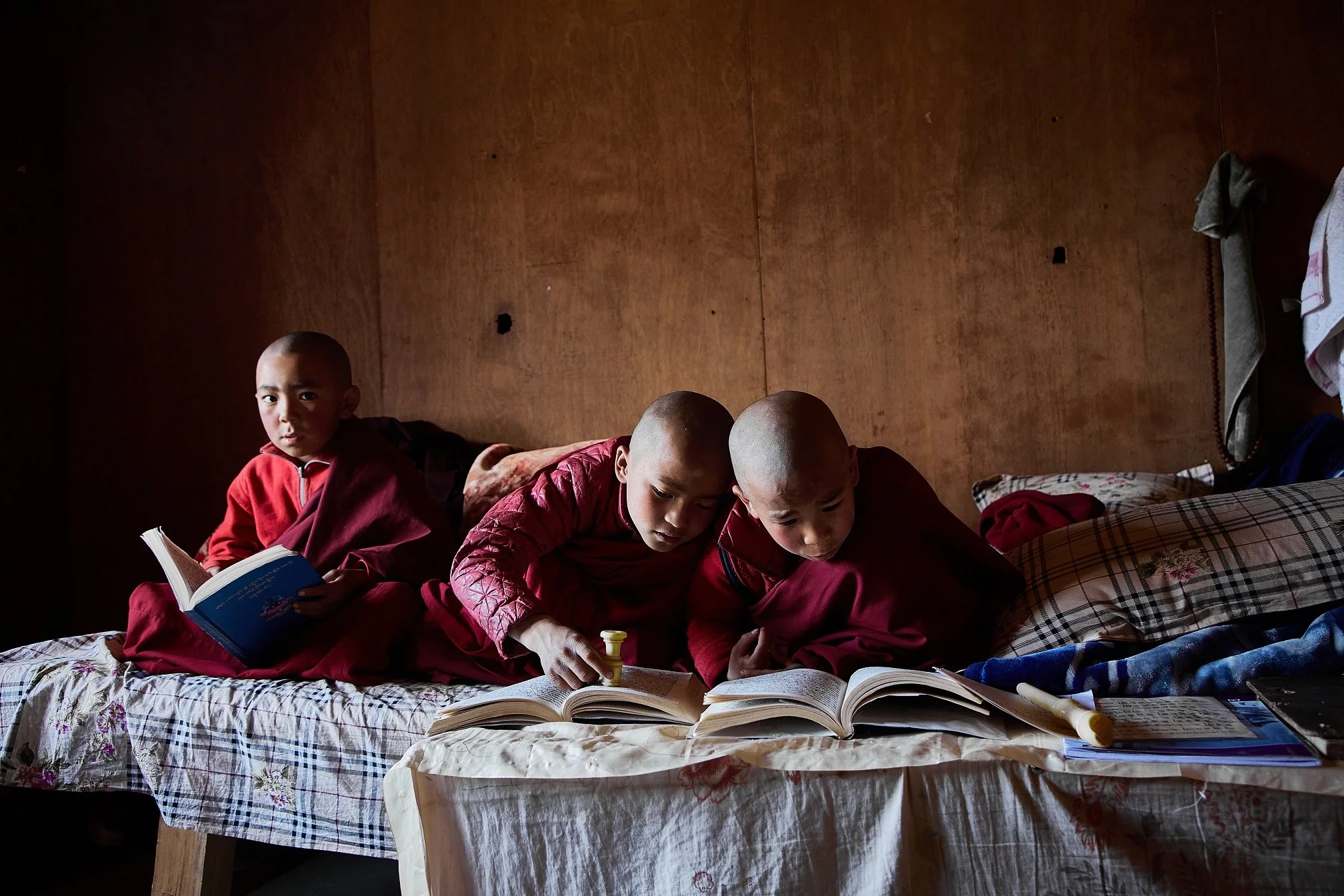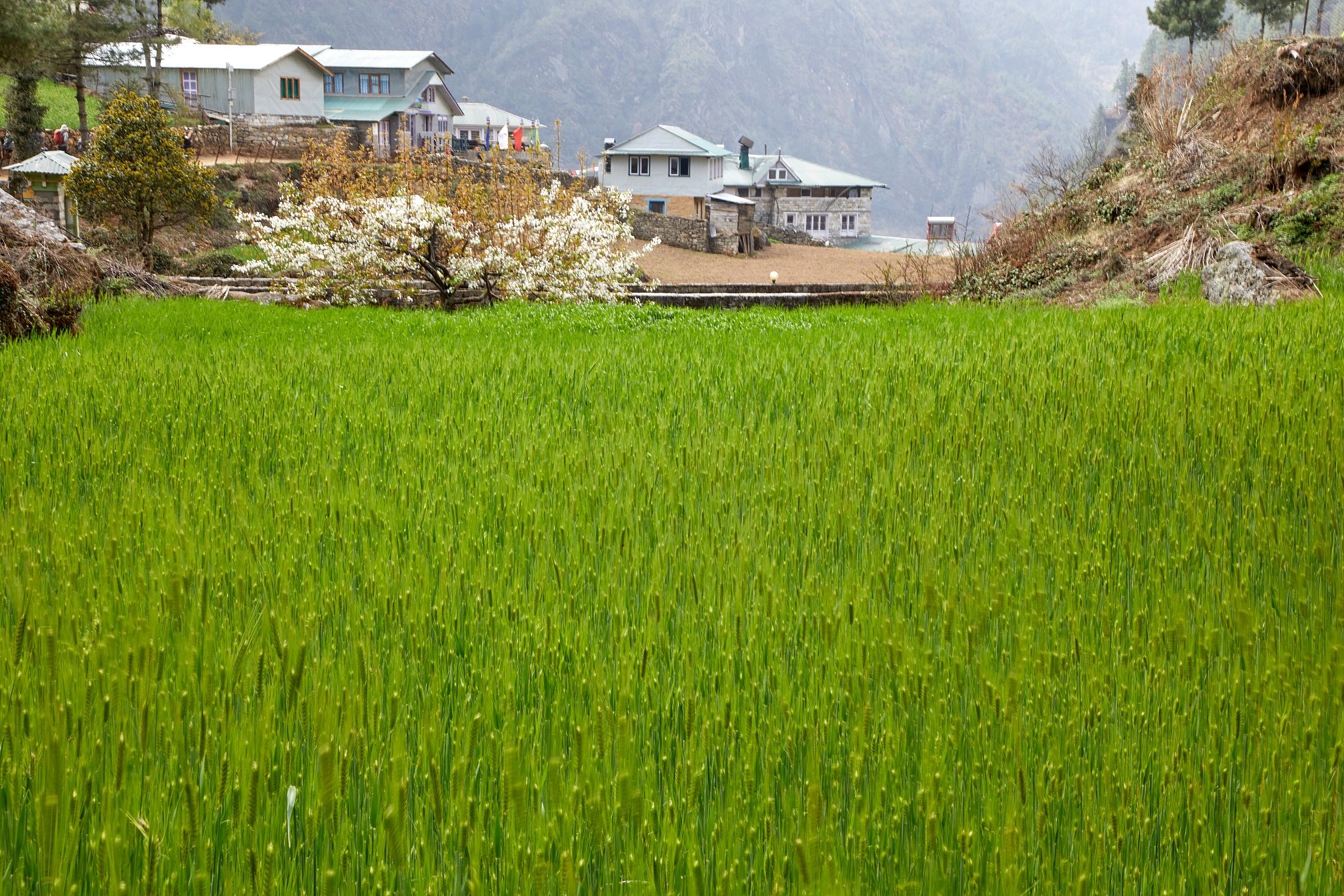Everest: Three Passes Itinerary
Day 1: Arrive in Kathmandu
Once you arrive in Kathmandu, you will be greeted by our representative at the airport. You will be driven to your hotel in a private vehicle. Check in, enjoy a welcome drink, and get refreshed.
Later in the day, there will be a trip briefing, where you will be introduced to your guide. Your guide will talk briefly about the trek, the route you will take, and the important things you need to keep in mind while trekking. Depending on the arrival time there will also be a late afternoon visit to the Swayambhunath stupa. This iconic Buddhist stupa sits atop a hill with views across the Kathmandu Valley. The stupa is heavily entwined into the creation myths of the Kathmandu valley and is an important buddhist pilgrimage site.
Day 2: Fly to Lukla & trek to Phakding
This morning we head to the airport for an early morning flight (35min)to Lukla. On a clear day there are stunning Himalayan vistas from the plane.
On arrival in Lukla you’ll meet your porters and other crew members and after breakfast in the town we start the trek. The first day’s hiking, which is through the forest, is short (2-3hrs) and all going well you will be in the village of Phakding (2610m) in time for a late lunch.
Note that flights to Lukla are very weather dependent and, dpeending on what time the flight actually leaves Kathmandu, we might not be able to stick religioulsy to the schedule outlined here.
Overnight in Phakding.
Day 3: Trek to Namche Bazaar
Today you get the first taste of real Himalayan trekking. Passing through pine and rhododendron forests, there are steep ascents, fabulous views and several high suspension bridges crossing over thundering rivers.
Arriving in the attractive Sherpa capital of Namche Bazaar (3440m; 5-6hrs), we head to our hotel. If time – and energy levels - allows you may wish to visit some of the towns museums, galleries and shops.
Overnight in Namche.
Day 4: Namche Bazaar: Acclimatization Day
This is the first compulsory acclimatization day that everyone heading higher up the trail is obliged to take. We don’t spend the day siting around though (unless you want too). Instead, we make the short-day hike to the villages of Khumjung and Khunde (4-5hrs round trip). We visit the Khumjung Monastery, which contains a scalp that some believe is that of a Yeti and we get to admire the view of the mountain peak just behind where legend (or maybe it’s not) says that a secret door leads to a hidden Buddhist paradise realm, and we visit the Khunde Chamkang, which is a modern but important Buddhist temple.
Overnight in Namche.
Day 5: Trek to Pangboche via Tengboche
We head out of Namche and start a steady climb. Soon the views open out and, if it’s a clear day, we will get our first proper views of Everest.
Reaching Tengboche, we pause to visit one of the most important Buddhist Monasteries in the Khumbu.
Continuing onwards, we follow a steeply undulating trail to cross the Imja River and arrive in Pangboche (3930m; 6-7hrs). The village is known for its ancient gompa (Pangboche Monastery), which is the oldest in Khumbu. The gompa was established by the patron saint of Khumbu, Lama Sanga Dorje and contains the preserved heart, tongue, and eyes of the lama.
Overnight in Pangboche.
Day 6: Search for a yeti
While today is another one of the compulsory acclimatisation days we don’t waste the day sitting around. In fact, this is scencially a stunner of a day but also a culturally fascinating one where we venture deep into the origin myth of the Sherpas. The Sherpas arrived in the Khumbu area from eastern Tibet in the 15th Century after persecuation and war forced them from their homeland. On arriving on the southern flanks of Mt Everest, the man who led them here, Lama Sanga Dorje, found a remote cave where he spent many years in meditation. During this period it’s said that he befriended a yeti who brough him food and water. When the yeti was killed in a rockfall Sanga Dorje brought the yetis hand back down into the valley where it can allegedly still be seen today in the Pangboche monastery. While we can’t promise any yeti encounters we can promise a real adventure as we take you to the very place where the lama spent so long in meditation and the yeti was killed. Very few people venture up here and most tour companies are not even aware of the sites existence, which makes this an experience unique to Samgai Journeys. From the meditation site there are incredible views across to Ama Dablam, one of the most distinctive mountains in the area. After descending back down to the valley floor we can go to the monastery to see the yeti hand.
Overnight in Pangboche.
Day 7: Trek to Dingboche
The hike from Pangboche to Dingboche is short but, because it gains around 500m in altitude, is quite demanding. We will take our time and make plenty of stops to enjoy the superb mountain scenery, which is dominated by Lhotse, the fourth highest mountain in the world.
As we climb higher, we pass above the tree line and the landscape becomes more barren. The mountains become closer as we near Dingboche (4410m; 3-4hrs), which lies in a deep valley surrounded by mountains. We should get to the lodge by lunch time and then the afternoon can be spent resting or exploring this half-frozen village.
Overnight in Dingboche.
Day 8: Day trip to summit of Nagarjun
Another important acclimatisation day is spent in Dingboche and on this day we venture above the magical 5000m for the first time. The rocky summit of Nagarjun (5100m; 4hrs round trip) is a superb viewpoint from which to take in some of the planets highest mountains. Although it’s a demanding climb it doesn’t present any technical issues.
After admiring the views we head back to the village and rest.
Overnight in Dingboche.
Day 9: Trek to Chukkung
It’s a gentle ascent up the valley to Chukkung (4730m; 3hrs) and hopefully, by now, you will be well-acclimatised and the walking will seem easier. There are marvellous views of Island Peak and Lhotse throughout most of this hike.
Chukkung lies below the Island Peak Base Camp and during the climbing season, it’s usually filled with climbers attempting to summit Island Peak.
Overnight in Chukkung.
Day 10: Rest day Chukkung
Although a rest day isn’t considered compulsory at Chkkung we have found that by doing so walkers are much better acclimatised and ready to take on the first of the big passes. It also happens that the view from Chhukung Ri (5546m), which is one of the options for the day, may even surpass that of the famous Kala Patthar. It’s a 6hr round trek from Chukkung to the summit and although there’s little technical about the ascent (though you might need to use your hands for the final few metres scramble to the top) we would class this as a very taxing day out and perhaps the hardest day of the entire trek. Not everyone makes it to the summit but a slightly lower easier summit shortly below the main summit is a good alternative. The other possible acclimatisation route is to Island Peak Basecamp (5090m; 6hrs rtn) which is notably easier than Chhukung Ri.
Overnight in Chukkung.
Day 11: Trek to Lobuche via Kongma La Pass
Today we cross the Kongma La (5535m), the first of the Three Passes and for many, the hardest. But it’s also perhaps the most scenically impressive. It’s a long and taxing day so we will get going early to start with a hike along the Imja Valley, past yak pastures, waterfalls and an often-frozen lake.
It’s then a long haul up scree slopes (well maintained path) to the top of the Kongma La. From this breathless viewpoint, you can enjoy panoramic views of Mount Everest, Gauri Shanker, Pumori, Makalu, Nuptse and Lhotse.
After taking in the views we head down the opposite side of the pass. It is a steep descent over boulders and loose rocks down to the Khumbu glacier, which we carefully cross. You can often hear the glacier moving and the ice cracking as you cross.
After a long hard day we finally reach Lobuche (4910m; 7-8hrs). You’re now back on the classic Everest Basecamp trail and the quality of teahouses is much higher than around Chukkung.
Overnight in Lobuche.
Day 12: Trek to Gorak Shep & Everest Base Camp
Today we hike to the iconic Everest Base Camp, one of the milestones of the trek. Though the trail is technically easy, the high altitude and bitter cold makes for an exhausting day.
A little over the halfway point we will reach the cold and uninspiring cluster of trekking lodges that make up Gorak Shep. We leave much of our gear here and have lunch before continuing the hike to basecamp alongside the amazing Khumbu Glacier. The valley we walk along, which can only be described as a frozen desert, is hemmed by some of the worlds highest mountains but for the most part the big mother remains tucked out of sight.
Arriving at Everest Base Camp (5,364m) is always a thrilling moment. Although you can’t actually see the top of Everest from this angle (that sight is reserved for tomorrow), you can see the massive wall of Lhotse, Western Cwm, Nuptse and the Khumbu Icefall. On the far side, there’s a rocky valley where the tents of Everest summiteers are set up (if it’s climbing season). Due to the glacier base camp is set upon becoming unstable thanks to climate change there’s talk of base camp being moved down to Gorak Shep.
We return to Gorak Shep (5,140m; 5-6hrs) for the night.
Day 13: Hike to Kala Patthar Dzongla
Your day begins before dawn with a hike to the summit of Kala Patthar (5500m) for a spectacular view across to Everest. The hike is a continuous uphill slog but with no technical difficulties.
From the top you will be rewarded by THE definitive view of Everest and the Khumbu. As well as the highest peak on Earth, the view also takes in giants like Pumori, Nuptse, Lhotse and more. The early morning sun lighting up the snow-covered peaks in golden light is a sight you will cherish forever.
Descending back down we take a late breakfast in Gorak Shep and then an enjoyable downhill hike to Dzongla (4,830m; 5-6hrs).
Overnight in Dzongla.
Day 14: Trek to Gokyo via Cho La Pass
It’s a long day of walking today up and over the Cho La, the second of our high passes, and then onto lovely Gokyo. From Dzongla we set out very early and zig-zag up hill through yak pastures and then more rocky landscapes. The last part up to the pass involves putting on crampons and climbing up the fast-shrinking Cho-La glacier. As far as glaciers go this one is safe and easy with a clear path to follow and no technical difficulties.
Reaching the prayer flag covered Cho La (5420m) rewards with a magnificent view both to the west and the east. After a pause we begin the descent down the western side of the pass. It starts off steep and rocky but quickly mellows out and yak pastures re-appear just before reaching the lunch stop of Thannak. If you want a shorter day then we can stop here for the night and continue to Gokyo the following day but that will add an extra day to the trek.
Leaving Thannak we undulate through rocky terrain and then come to the edge of the huge Ngozumpa Glacier, which is the longest in Nepal. The crossing of the glacier is impressive. We will weave between walls of shifting ice and pass small melt water lakes before climbing up the far side to a ridge with views down onto Gokyo and the arrestingly blue lake of Gokyo Tsho. There are some nice trekking lodges in Gokyo which will be much appreciated after such a draining day.
Overnight in Gokyo.
Day 15: Hike to Gokyo Ri
After the exertions of yesterday we now get to enjoy a more leisurely couple of days. This morning we climb to the top of Gokyo Ri (5360m), a small hill and superb viewpoint. No technical climbing is involved. The path up the hill is steep but easy enough with excellent views of the Gokyo Valley, Ngozumpa Glacier, and 8000-meter peaks including Cho Oyu and Mount Everest.
From the top take in the views of the emerald Gokyo Lakes and a huge panorama of Himalayan peaks that takes in Cho Oyu, Mount Everest, Makalu, and distant Tibetan mountains.
After lunch most people just relax in the lodge but it’s well worth mustering up the energy for a stroll around the lake shores.
Overnight in Gokyo.
Day 16: Day trip trek to fourth and fifth lakes
Few people make the effort to head further up the Gokyo valley to the lakes (4-5hrs) tucked away to the north close to the border of Tibet, but it’s a wonderful and fairly easy day hike into uninhabited country. The trail gains altitude slowly as it follows the river valley through yak pastures and then a rock and scree wilderness. After less than two hours we pass the huge fourth lake and then, in some of the wildest countryside encountered during the whole of this trek, we reach the remote fifth lake (4980m) from where we can climb onto the lateral moraine of the Ngozumpa Glacier. For those with serious energy it’s possible to climb to a ridge on a peak just north of the fifth lake, known as Scoundrels Viewpoint (topographic maps offer varying locations for this viewpoint with some marking it as being on the edge of the glacier) with out of this world mountain views. We will have a picnic lunch by one of the lakes before returning to Gokyo.
Overnight Gokyo
Day 17: Trek to Lumde via Renjo La Pass
Today we cross the Renjo La (5360m), the last, and easiest, of the three passes. After breakfast, we walk along the northern shore of the fourth lake and then start a long climb. Grassy at first, the landscape eventually turns rocky and barren until we finally reach the Renjo La. From the top you can enjoy heart-stopping views of the Rolwaling Range, Gyachung Kang, and other little known peaks as well as distant views of Makalu and Mount Everest.
It is an easy descent down off the pass and then the trail takes us past a couple of attractive green lakes and into softer countryside to the small herding village of Lumde (4368m; 5-6hrs). You are now in the much more traditional Thame valley and an area that relatively few foreign trekkers visit. And yet, for many, this valley often turns out to be an unexpected highlight of the trek.
Overnight in Lumde.
Day 18: Trek to Thame
An easy and short downhill hike today to the wonderful village of Thame, the spiritual heartland of the Khumbu region. As the trail descends so the countryside becomes ever greener, and the air warmer and more oxygen-rich. After so long in the cold and at altitude this is a pure delight. All the way along we can enjoy views of small herding communities with big mountains framed behind. As we draw closer to Thame the more human habitation there is and with that comes more stupas and chapels, some of which we will explore on the way. After arriving in Thame (3820m; 4-5hrs) we take lunch and then head up to the large Thame monastery complex. The monks here don’t get too many foreign visitors and are normally delighted to show people around. The Thame area is the heart of Sherpa culture and spiritual belief. This valley is where the Sherpas first entered Nepal from Tibet and legend has it that a gateway hidden on a rock face somewhere around here leads to a secret Buddhist paradise known as a beyul. However, the entry to the beyul is only revealed at times when the world is under great stress (so we can probably tick that box) but also only to the spiritually and morally pure, which for most of us can be more problematic…
Overnight Thame
Day 19: Trek to Namche Bazaar
The hike from Thame back down to Namche Bazaar is a short, sweet and easy downhill stroll through ever greener and more forested landscapes that takes no more than three hours. But, the forested mountain slopes around Thame and on the way to Namche hide many rarely visited chapels, monasteries and retreats, including the important Lawudo Gompa behind which is a white cliff that is said to contain the gateway to the beyul (but the resident monks won’t let you see this). Instead of rushing down to Namche we take our time on this, the penultimate day of our trek, and visit Lawundo and some other nearby chapels. At the end of the day, we make our way back to Namche (3420m; 6hrs) for a night in a comfortable trekking lodge.
Overnight Namche Bazaar
Day 20: Trek to Lukla
Back on familiar ground we walk all the way back to Lukla (2840m; 5-6hrs) today following the same trail we took at the start of our hike. It’s a long days walking but being mainly downhill and in oxygen rich air you’ll make good progress and find the walking easy.
Overnight Lukla
Day 21: Fly to Kathmandu
We take an early morning flight from Lukla back to Kathmandu. After transferring to the hotel we have the morning at leisure. In the afternoon we visit the two most important heritage sites of Kathmandu, the Pashupatinath Temple, which is an important riverside Hindu pilgrimage site and the Boudhanath stupa, which is arguably the most important Tibetan Buddhist pilgrimage site outside of Tibet.
Note that due to the highly unpredictable mountain weather flights from Lukla to Kathmandu are frequently cancelled. If this happens to us then we should be prepared to spend this day in Lukla waiting for a flight the following day. Please allow at least two days after the end of your trek and an onward international flight.
Overnight Kathmandu.
Day 22: Fly home
This tour ends the morning after our return to Kathmandu. If you are flying out on the morning of day twenty-two then we will provide an airport transfer for you. Tour ends on arrival at the airport. If you are not leaving Nepal on the morning of day twenty-two then the tour ends after breakfast on day twenty-two. We can also provide further tours and treks in Nepal as well as elsewhere in the Himalaya and southern Asia.

